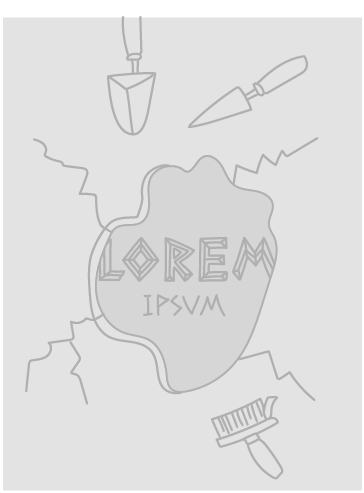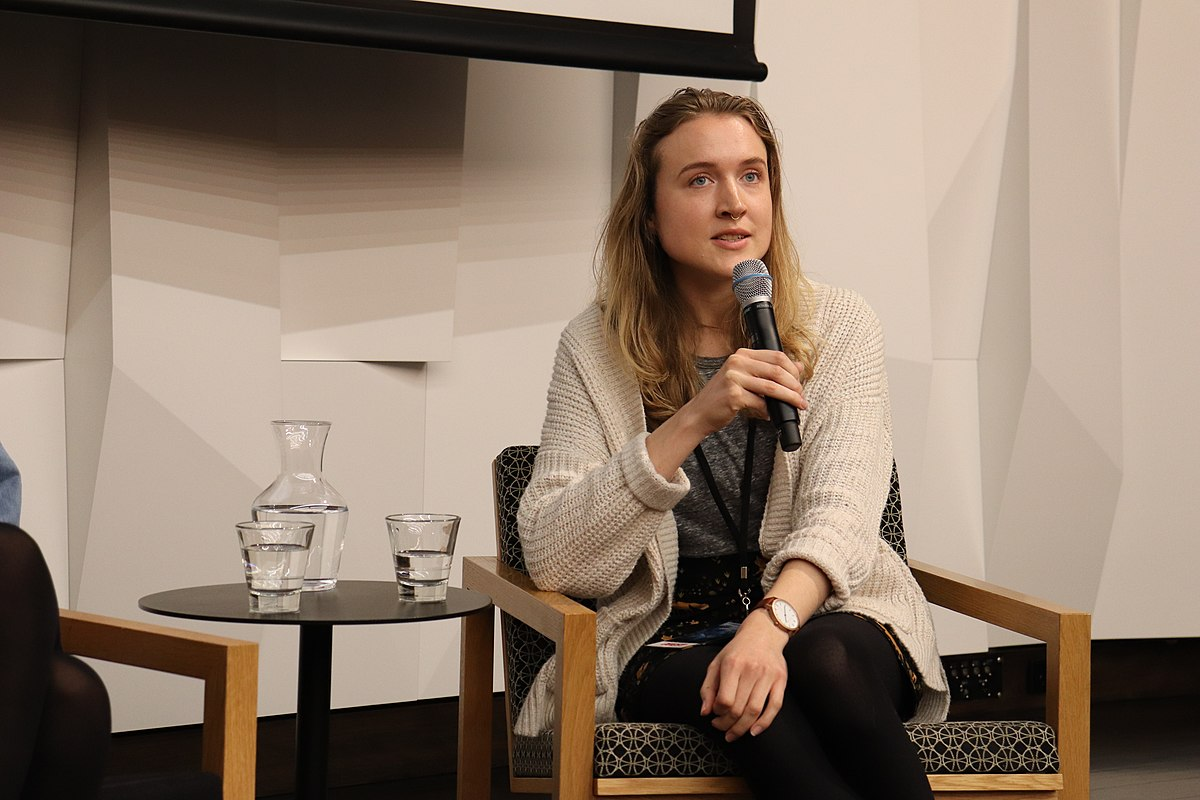Title of the work
Country of the First Edition
Country/countries of popularity
Original Language
First Edition Date
First Edition Details
Katie O’Neill, Aquicorn Cove. Portland, Oregon: Oni Press, 2018, 96 pp.
ISBN
Genre
Chapter book*
Target Audience
Children (8–10 years)
Cover

We are still trying to obtain permission for posting the original cover.
Author of the Entry:
Elizabeth Hale, University of New England, ehale@une.edu.aus
Peer-reviewer of the Entry:
Lisa Maurice, Bar-Ilan University, lisa.maurice@biu.ac.il
Elżbieta Olechowska, University of Warsaw, elzbieta.olechowska@gmail.com

Katie O’Neill by David Thomsen. Retrieved from Wikimedia Commons, licensed under CC BY-SA 4.0 (accessed: January 26, 2022).
Katie O’Neill (Author)
Katie O’Neill is a writer and illustrator from New Zealand, who developed a following for her webcomics, published on Tumblr, and generally focuses on fantasy slice-of-life stories (i.e stories that focus on a short period of time, giving a taste of a day in the life of a protagonist or community). aimed at all ages. Princess Princess was later published by Oni Press as Princess Princess Ever After. The Tea Dragon Society, also published by Oni, has won several awards, including two Eisner Awards (Best Publication for Kids 9-12, and Best Webcomic). O’Neill’s work is consciously inclusive.
Bio prepared by Elizabeth Hale, University of New England, ehale@une.edu.aus
Adaptations
Aquicorn Cove has been adapted into a board game by Renegade Game Studios (accessed: September 15, 2020).
Summary
Lana, a motherless girl, returns to the small seaside town of Abalone with her father, to spend time with her Auntie Mae, and help her repair the family property after a storm. Walking on the beach and looking in rock pools, remembering times she spent there with her mother, Melody, Lana finds a curious, wounded creature, like a seahorse but not quite. She puts it in a jar of water, and takes advice from Mae to feed it brine shrimp. Later, while on beach clean-up, Lana is greeted by a larger version of the creature, which presents her with a wristwatch. Lana tells the creature she is looking after its friend, and tells the creature "it’s nice to have someone looking out for you." Lana enjoys spending time with Aunt Mae, helping her to catch and cook fish, and work in the garden, though she misses her mother. When her father reassures her they can go home to the city soon, however, Lana admits to the reader that she does not wish to go back: she likes being with her aunt, who takes care of her.
On the beach again, the creature (as we learn shortly, an Aquicorn: a winged seahorse with a single horn on its forehead) presents Lana with a pendant in the form of a turret shell. She shows it to Mae, who is emotional at the sight, saying she "lost this… a long time ago". Mae recounts how she fell overboard during a night-time fishing expedition, and was rescued by a pair of Aquicorns, who took her to a mysterious underwater coral city. There, Aure, a beautiful blue woman who also has a horn in the middle of her forehead, dresses Mae’s wounds, gives her food, and shows her around, before the aquicorns take her home. She gives Mae the pendant, saying "wear this into the water, and the Aquicorns will guide you to me". Mae tells Lana about her growing friendship with Aure, and their discussions about caring for the sea (Mae, like the fisherfolk of Aquicorn Cove are using plastic trawling nets, rather than lines to fish; Aure hints that they may unwittingly deplete stocks). During a storm, Mae’s sister (Lana’s mother) Melody drowns; Aure returns her body to the shore, where she is buried. Not long after, Aure shows Mae that the sea colony is in trouble, because of overfishing: "The Aquicorns are getting injured by your plastic nets, and don’t have enough food to eat. They cannot heal the coral as they used to." Aure reprimands Mae, saying that the fisherfolk need to return to old fishing practices, and take less from the sea. Mae refuses, saying that her village’s livelihood depends on the plastic nets, and the pair part. Mae tells Lana that in anger, she threw the pendant into the sea.
Lana and her father are about to leave the village when a warning comes in on the radio that a major storm is approaching. They gather with others at the community hall, but Mae goes out to the point to warn some hermits of the incoming weather, and is lost. Lana goes down to the sea. Her tears fall into the water and summon the Aquicorns, who take her to the coral city, where she finds Mae sitting sadly with Aure. Lana tells Mae that she believes Aure is right, and that the fisherfolk need to change their practices: "I know our village is small, and we can only do small things to help the sea. But I still think we should do them. Even if other people are harming the reef, it doesn’t make it okay for us as well. The Aquicorns are gentle and kind, they don’t deserve to lose their home. And if the reef dies, I think our village will die too." Aure and Mae are reconciled, and Aure gives Lana a pendant like Mae’s, saying she sees her as a "guardian of the reef."
Back on shore, Lana’s dad greets her joyfully, and the villagers start cleaning up all over again, accepting that it is part of nature’s rhythm. Mae learns to weave nets like her grandmother did (nets that allow the small fish to escape so that the population is not wiped out). Lana is glad that Aure and Mae are reconciled. Lana determines that the Aquicorn she rescued is now well enough to be returned to the sea. "Have a good life!" she cries, and the Aquicorn waves a flipper in farewell.
The story finishes with a 3-page explanation of coral reefs—what they are, where they can be found, what is causing them damage, and how we can stop the damage.
Analysis
Aquicorn Cove uses classical motifs to help explore environmental themes (over-fishing and damage to reefs). The representation of the coral reef as a kind of underwater city (not unlike the lost city of Atlantis), and its association with magical creatures, the Aquicorns – a combination of unicorns, Pegasus, and seahorses, casts the story in the light of a fantasy, whereby broken relationships are repaired along with the environment, and a motherless girl finds new strength in caring for others. Themes that are common for girls aged between 8 and 12 (caring, nurturing, mothering) are woven into a didactic narrative about the rhythms of nature. Like others of O’Neill’s works, LGBTQI+ themes are lightly handled (the relationship between Aure and Mae), and a sense of community and friendship is connected with the natural world. The illustrations are gentle, pastel-coloured, and consciously pretty – underscoring the beauty of nature, of family, and of friendship.
While Aquicorn Cove does not explicitly reference Atlantis or Pegasus, the motif of the underwater city better-aligned to nature, both ancient and futuristic, is common in speculative fiction, and draws its inspiration from the famous lost city that Plato discusses. Here, O’Neill touches on the concept lightly, as part of her emphasis on environmental stewardship. The Aquicorns, too, are not explicitly linked to Pegasus, but contain many elements of Classical mythical creatures – wings, unicorn horns, and the qualities of the hippocamps – a steed of the sea that mixes the upper body of the horse with the tail of a sea-serpent. O’Neill’s representation of these creatures is softly pastel, and idealised in a way that would appeal to little girls – indeed the idea of the girl’s friendship with a magical creature is common in children’s fiction.


